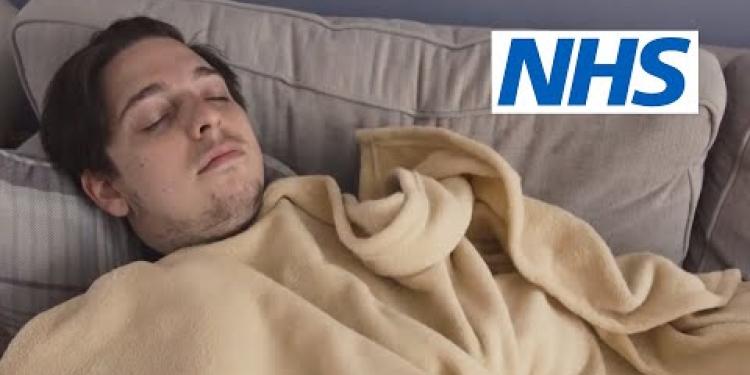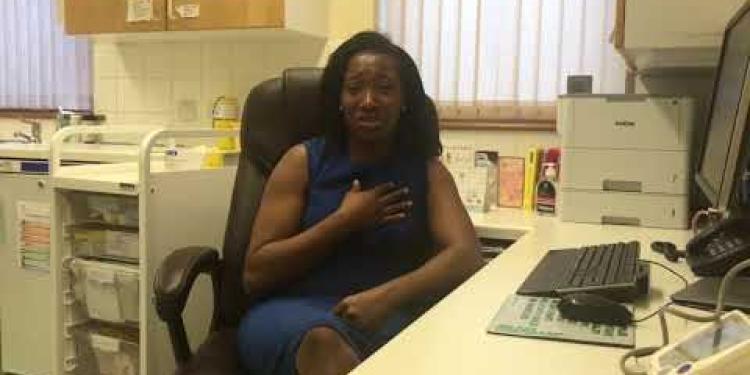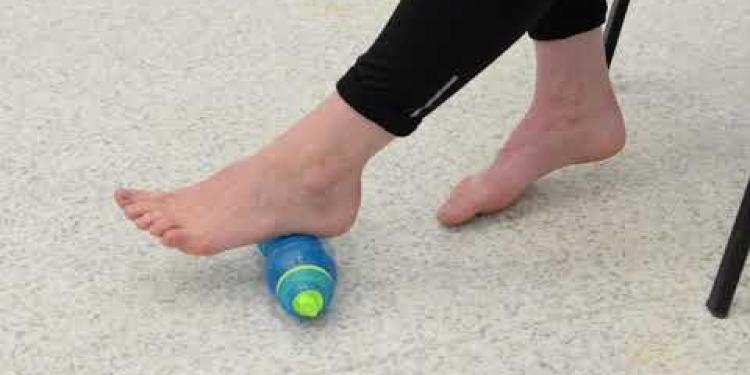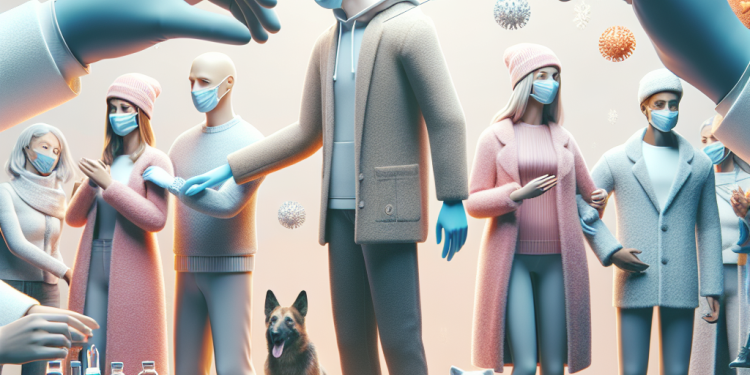Important Information On Using This Service
- Ergsy carefully checks the information in the videos we provide here.
- Videos shown by YouTube after a video has completed have NOT been reviewed by ERGSY.
- To view, click the arrow in the center of the video.
Using Subtitles and Closed Captions
- Most of the videos you find here will have subtitles and/or closed captions available.
- You may need to turn these on and choose your preferred language.
Turn Captions On or Off
- Go to the video you'd like to watch.
- If closed captions (CC) are available, settings will be visible on the bottom right of the video player.
- To turn on captions, click settings.
- To turn off captions, click settings again.
Find A Professional
More Videos of Interestdiagnosis
How to Treat a Cold | NHS
Understanding Common Cold Symptoms
The common cold is a viral infection that primarily affects the nose, throat, and sinuses. Common symptoms include a sore throat, runny or blocked nose, sneezing, coughing, and a general feeling of being unwell. While colds are usually mild, they can be particularly uncomfortable and inconvenient.
Rest and Hydration
One of the most important things you can do when you have a cold is to get plenty of rest. Your body needs energy to fight off the virus, so try to sleep for at least 8 hours each night. Additionally, staying well-hydrated supports your immune system and helps ease symptoms like a sore throat and congestion. Aim to drink plenty of fluids, such as water, herbal teas, and clear broths.
Over-the-Counter Remedies
Over-the-counter (OTC) medications can help manage cold symptoms. Pain relievers like paracetamol or ibuprofen can reduce fever and alleviate aches and pains. Decongestants and nasal sprays can help to unblock your nose, but should not be used for more than a few days to avoid rebound congestion. Throat lozenges and cough syrups can soothe a sore throat and reduce coughing.
Home Remedies and Self-Care
There are several home remedies that can help alleviate symptoms. Inhaling steam from a bowl of hot water can ease nasal congestion. Adding some menthol or eucalyptus oil to the water can provide additional relief. Gargling with warm salt water can help to soothe a sore throat. Honey and lemon in hot water can also be effective for calming a cough and sore throat.
Avoid Spreading the Virus
To prevent spreading the cold virus to others, practice good hygiene. Wash your hands frequently with soap and water, especially after sneezing or coughing. Use tissues to catch sneezes and dispose of them immediately. Avoid close contact with others while you are symptomatic.
When to Seek Medical Advice
Most colds are self-limiting and will resolve within a week or two. However, you should seek medical advice if your symptoms are severe, persist for more than three weeks, or if you experience any of the following: difficulty breathing, chest pain, a high fever that doesn't respond to medications, or the symptoms of a secondary infection like sinusitis or an ear infection.
Conclusion
While there's no cure for the common cold, following these guidelines can help you manage symptoms and recover more comfortably. If in doubt, visit the NHS website for more information or speak to a healthcare professional.
Frequently Asked Questions
What are the common symptoms of a cold?
Common symptoms include a sore throat, runny or blocked nose, sneezing, coughing, headaches, and a general feeling of being unwell.
How long does a cold typically last?
A common cold usually lasts about a week or two. Most people start to feel better within 7 to 10 days.
Can antibiotics treat a cold?
No, antibiotics do not work on viral infections, such as colds. They only work on bacterial infections.
What over-the-counter medications can help alleviate cold symptoms?
You can use decongestants, pain relievers like paracetamol or ibuprofen, and cough syrups to help ease symptoms.
Is it necessary to see a doctor for a cold?
Most people do not need to see a doctor for a cold. However, if symptoms are severe or persist for longer than three weeks, or if you have underlying health conditions, you should seek medical advice.
Are there any home remedies that can help with cold symptoms?
Yes, staying hydrated, resting, using saltwater gargles for a sore throat, and inhaling steam can help alleviate symptoms.
Can taking vitamin C prevent a cold?
While vitamin C won’t prevent a cold, some studies suggest that it may help reduce the duration and severity of cold symptoms.
How can I prevent catching a cold?
Good hygiene practices, such as regular hand washing, avoiding close contact with people who have colds, and not touching your face, can help prevent catching a cold.
Is it safe to exercise when I have a cold?
Mild to moderate exercise is usually okay if your symptoms are above the neck, such as a runny nose or sore throat. However, you should rest if you have a fever, fatigue, or muscle aches.
Can a cold turn into the flu?
No, a cold and the flu are caused by different viruses, and one does not turn into the other. However, the symptoms can be similar.
Is it beneficial to use a humidifier when you have a cold?
Yes, using a humidifier can help relieve nasal congestion and soothe irritated airways.
Can you catch a cold from going outside with wet hair?
No, you cannot catch a cold from being outside with wet hair. Colds are caused by viruses, not cold temperatures or wet hair.
Are cold symptoms different in children compared to adults?
The symptoms are generally the same, but children may experience symptoms more severely, and fever is more common in children.
What should I eat or drink if I have a cold?
Stay hydrated with water, herbal teas, and clear broths. Eating nutritious foods, such as fruits and vegetables, can also help your immune system.
When should I stay home from work or school if I have a cold?
You should stay home if you have a fever, are feeling very unwell, or have a cough that cannot be controlled. This helps prevent spreading the infection to others.
Useful Links
Useful links from: Dealing with Common Childhood Illnesses
- NHS - Childhood illnesses This NHS page provides an overview of common childhood illnesses and how to spot their symptoms. It also covers when to seek medical advice.
- NHS - Common health questions: Children's health A collection of frequently asked questions about children's health, answered by the NHS. Topics include fever management, vaccinations, and dealing with common ailments.
- Great Ormond Street Hospital - Conditions and Treatments Great Ormond Street Hospital's resource for understanding various childhood conditions and the treatments available. The site offers detailed information on specific illnesses.
- The Lullaby Trust - Illnesses and infections The Lullaby Trust provides advice on safer sleep for babies and key information on dealing with illnesses and infections in infants.
Useful links from: Understanding Seasonal Flu: Prevention and Treatment
- NHS - Flu Comprehensive guide by the NHS on flu, including symptoms, causes, diagnosis, treatment, and prevention tips.
- NHS - Flu vaccination Detailed information from the NHS about the flu vaccine, who should get it, how it works, and its effectiveness.
- Asthma UK - Flu and People with Asthma Advice from Asthma UK on the impact of the flu on people with asthma, including prevention tips and the importance of vaccination.
- British Lung Foundation - Flu (influenza) The British Lung Foundation's resource providing information on flu, how it affects people with lung conditions, and preventive measures.
More Videos of Interestdiagnosis
Have you found an error, or do you have a link or some information you would like to share? Please let us know using the form below.
- Ergsy carfully checks the information in the videos we provide here.
- Videos shown by Youtube after a video has completed, have NOT been reviewed by ERGSY.
- To view, click the arrow in centre of video.
- Most of the videos you find here will have subtitles and/or closed captions available.
- You may need to turn these on, and choose your preferred language.
- Go to the video you'd like to watch.
- If closed captions (CC) are available, settings will be visible on the bottom right of the video player.
- To turn on Captions, click settings .
- To turn off Captions, click settings again.






